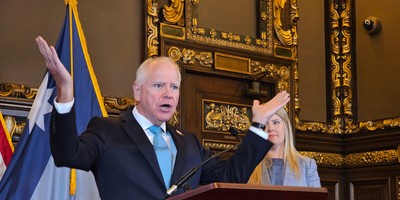One of the striking facets of the economic downturn that started in 2008 and the ‘recovery’ that has continued until today is the unprecedented slack in the American labor force. While on its face ‘unemployment’ has dropped to pre-recession levels, labor force participation remains strikingly low. Wages have remained stagnant – with consequential effects on consumer demand and economic growth.
There was once a time when labor was the engine of the American economy. In fact, we are reminded that at one time, labor was the most important commodity in the country. Labor Day – or the “workingmen’s holiday” – stands as a testament to the fact that around the 20th century, America was fully employed. Many workers complained – not because there were too few jobs – but because they were overworked to the core. Seven day work weeks and twelve hour shifts were the norm. Labor capacity was so stretched that even children were recruited to work in the factories and farms.
This stands in stark contrast to today. Labor force participation as of July sits at a dismal 62%, a 38 year low. Many people who lost their jobs during the height of the great recession have subsequently dropped out of the labor force, or struggle to find meaningful work that provides life-sustaining income. The middle has been largely sucked out of the employment landscape, creating a barbell-shaped workforce with expanding opportunities at the lower and higher skill levels.
This new normal is reflected in America’s debate over immigration. On the one hand the surging battle over immigration reform has focused largely on the exclusion of Americans from low-skilled jobs in the service and agricultural sectors. In the latter, non-citizen immigrants (whether legal or illegal) constitute more than half the work force. Many economists argue that Americans either can’t or won’t take those jobs – as dishwashers, lawn keepers, and farm hands – and that immigration reform would thus have a deleterious effect on the U.S. economy in terms of making domestically produced goods and services too expensive for the average consumer. But still the tension remains, and is reflected in passionate political debate over the status of an estimated 11.2 million undocumented immigrants in the work force.
Recommended
It is also reflected in various recent movements to increase the statutory minimum wage and drive the reclassification of American workers. This past July, U.S. Court of Appeals for the Second Circuit July rejected a case brought by interns for Fox Searchlight Pictures alleging that they should be paid for work they did as unpaid interns. Internships have long served as the U.S. equivalent of apprenticeships for industries in which there are no formal guilds or unions. But some question whether employers are taking undue advantage of interns in that not only are they getting ‘free’ work – but the informal structure of the internships does not provide a sufficient pathway to rewarding jobs. Many have decried the overall decline in unions and guilds as a harbinger of cheap, commodity labor force that even at full employment, does not generate the spending power to fuel domestic growth.
At the other end of the spectrum there is concern that America’s skilled technical workforce is underwhelming the global competition. The tech industry has pushed the U.S. government to institute labor law reforms that would increase the number of H1-B visas for highly skilled technical workers by heavily recruiting from countries like India and China – which currently lead the world in the number of new engineers produced each year. In fact, labor in the technical sector has led to the ascendancy of the tech worker. Those workers with competent skills in that arena remain in high demand and among the most sought after in the U.S. Meanwhile U.S. firms say that a shortage of these workers is hindering U.S. global competitiveness.
And then there is the economy as a whole. The Federal Reserve Board of Governors met in late August at Jackson Hole, Wyoming to discuss the state of the economy and whether economic growth warranted the Fed raising key interest rates that have remained at historically low levels since 2009. One of the key drivers of the interest rate debate is the true nature of the employment story. Fed Reserve Vice-Chairman Stanley Fischer in his speech before the Governors on August 29th noted that “Although the economy has continued to recover and the labor market is approaching our maximum employment objective, inflation has been persistently below 2 percent.” This rather dry sounding statement is about as close to a sigh of frustration as you’ll hear from the Fed. The situation that the Fed is perplexed about is how our economy can be full at employment and yet still experience shrinking consumer demand for goods and services. The two have almost always risen in lock-step throughout the history of the U.S. The Fed is signaling that despite the tope line numbers, there is still significant room to grow in terms of robust employment for Americans. As Fisher noted, “[w]hile thinking of different aspects of unemployment, we are concerned mainly with trying to find the right measure of the difficulties caused to current and potential participants in the labor force by their unemployment.”
The current structure of the U.S. workforce is increasingly taking the semblance of a barbell – with a low concentration of highly-paid jobs at the top, and high concentration of low paying jobs at the bottom – cutting out the vaunted American middle class. This picture of America is disconcerting to many who see the middle class as the primary driver of American national identity and the engine of economic growth.
























Join the conversation as a VIP Member